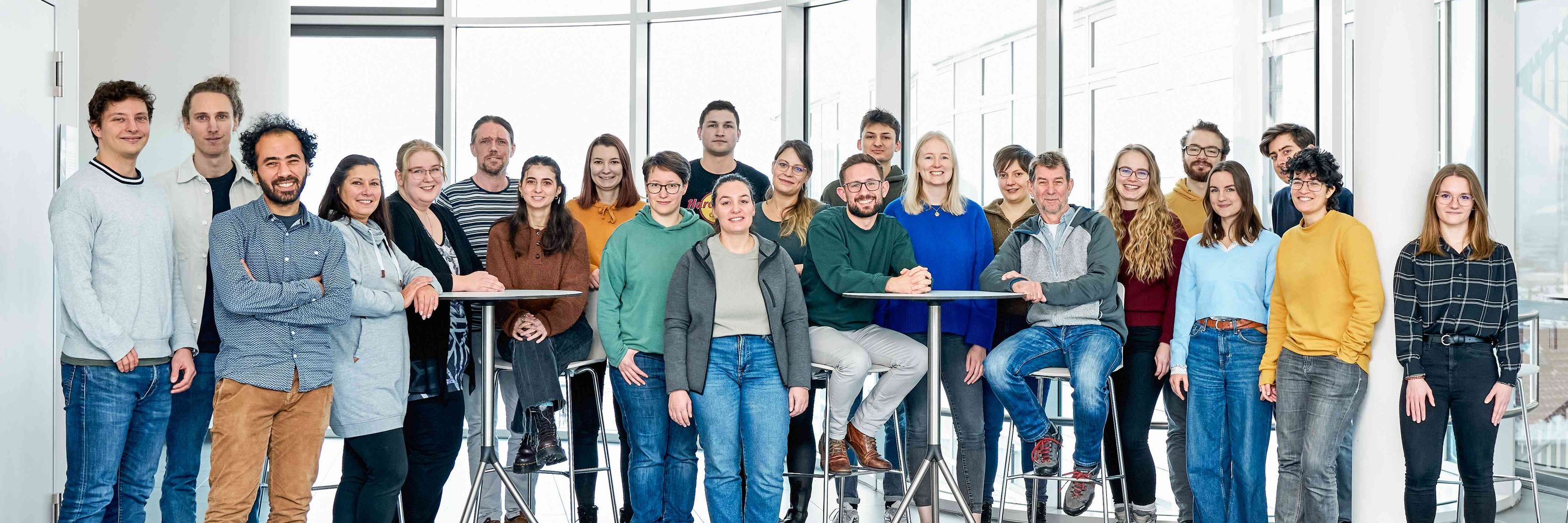
Studying pathogenicity of yeast-y beasties in the 𝘊𝘢𝘯𝘥𝘪𝘥𝘢 clade. 🧫🔬🦠🍄
Head: Prof Bernhard Hube
Webpage: https://www.leibniz-hki.de/en/microbial-pathogenicity-mechanisms.html

Read our @leibniz-hki.de most recent discovery @plos.org
doi.org/10.1371/jour...
(1/2)

🧑🏻🔬: @jlspragu.bsky.social
@jlspragu.bsky.social & coll. show yeast can reach the bloodstream by hitchhiking with invasive hyphae or by switching forms. 🧫 More clues for understanding systemic infections !
👉 buff.ly/0vklJeb

🧑🏻🔬: @jlspragu.bsky.social
🗞️✨ lmy.de/zVSiL
#TotalEquality

🗞️✨ lmy.de/zVSiL
#TotalEquality
@jlspragu.bsky.social & coll. show yeast can reach the bloodstream by hitchhiking with invasive hyphae or by switching forms. 🧫 More clues for understanding systemic infections !
👉 buff.ly/0vklJeb


@ameliabarberphd.bsky.social, Junior Group Leader #FungalInformatics, shared fascinating insights in her talk “From Ecology to Genomes: Unraveling Fungal Pathogenicity Across Scales.”
Lively discussions and great connections followed!

@ameliabarberphd.bsky.social, Junior Group Leader #FungalInformatics, shared fascinating insights in her talk “From Ecology to Genomes: Unraveling Fungal Pathogenicity Across Scales.”
Lively discussions and great connections followed!
the 2025 Halloween Lab Pumpkin Carving Edition!!! 😁🥳👻

the 2025 Halloween Lab Pumpkin Carving Edition!!! 😁🥳👻
www.youtube.com/watch?v=FA45...

www.youtube.com/watch?v=FA45...
lmy.de/LsPim
#FacesOfScience #LeibnizHKI




lmy.de/LsPim
#FacesOfScience #LeibnizHKI

Read our @leibniz-hki.de most recent discovery @plos.org
doi.org/10.1371/jour...
(1/2)

Read our @leibniz-hki.de most recent discovery @plos.org
doi.org/10.1371/jour...
(1/2)
And congratulations to our PhD student Myrto who won a prize for her excellent poster presentation! 🥳🎉
@leibniz-hki.de

And congratulations to our PhD student Myrto who won a prize for her excellent poster presentation! 🥳🎉
@leibniz-hki.de
@leibniz-hki.de



@leibniz-hki.de
@microbiologysociety.org
@trr124-funginet.bsky.social
@leibniz-hki.de

@microbiologysociety.org
@trr124-funginet.bsky.social
@leibniz-hki.de
@microbiologysociety.org



@microbiologysociety.org
@leibniz-hki.de
@microbiologysociety.org


@leibniz-hki.de
@microbiologysociety.org

from #UNSW #Sydney present her groundbreaking work on harnessing the human microbiome to combat #CandidaAlbicans, along with advances in antifungal polymers we at @leibniz-hki.de have had the pleasure to collaborate on in the past!

from #UNSW #Sydney present her groundbreaking work on harnessing the human microbiome to combat #CandidaAlbicans, along with advances in antifungal polymers we at @leibniz-hki.de have had the pleasure to collaborate on in the past!


@natmicrobiol.nature.com
@mpm-hki.bsky.social
picture credits: Erik Böhm, @leibniz-hki.de

@natmicrobiol.nature.com
@mpm-hki.bsky.social
picture credits: Erik Böhm, @leibniz-hki.de


